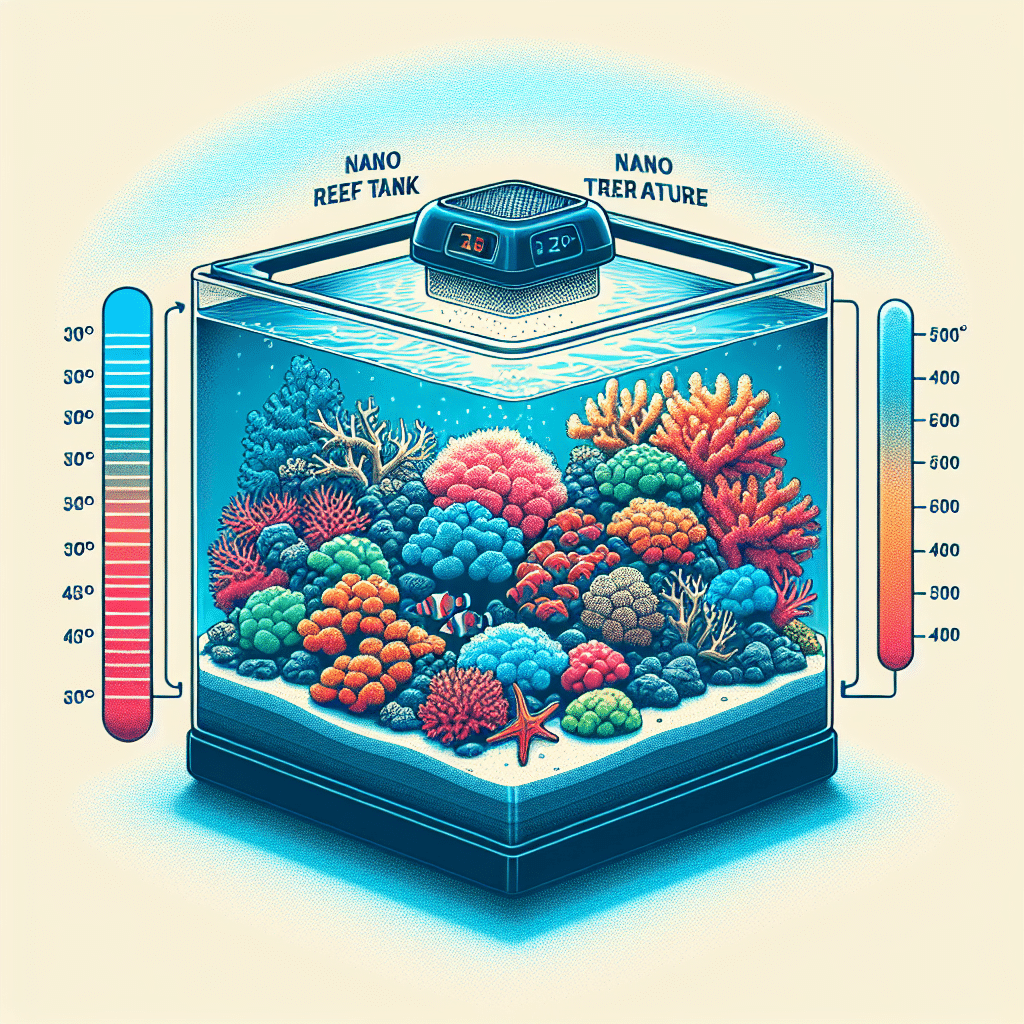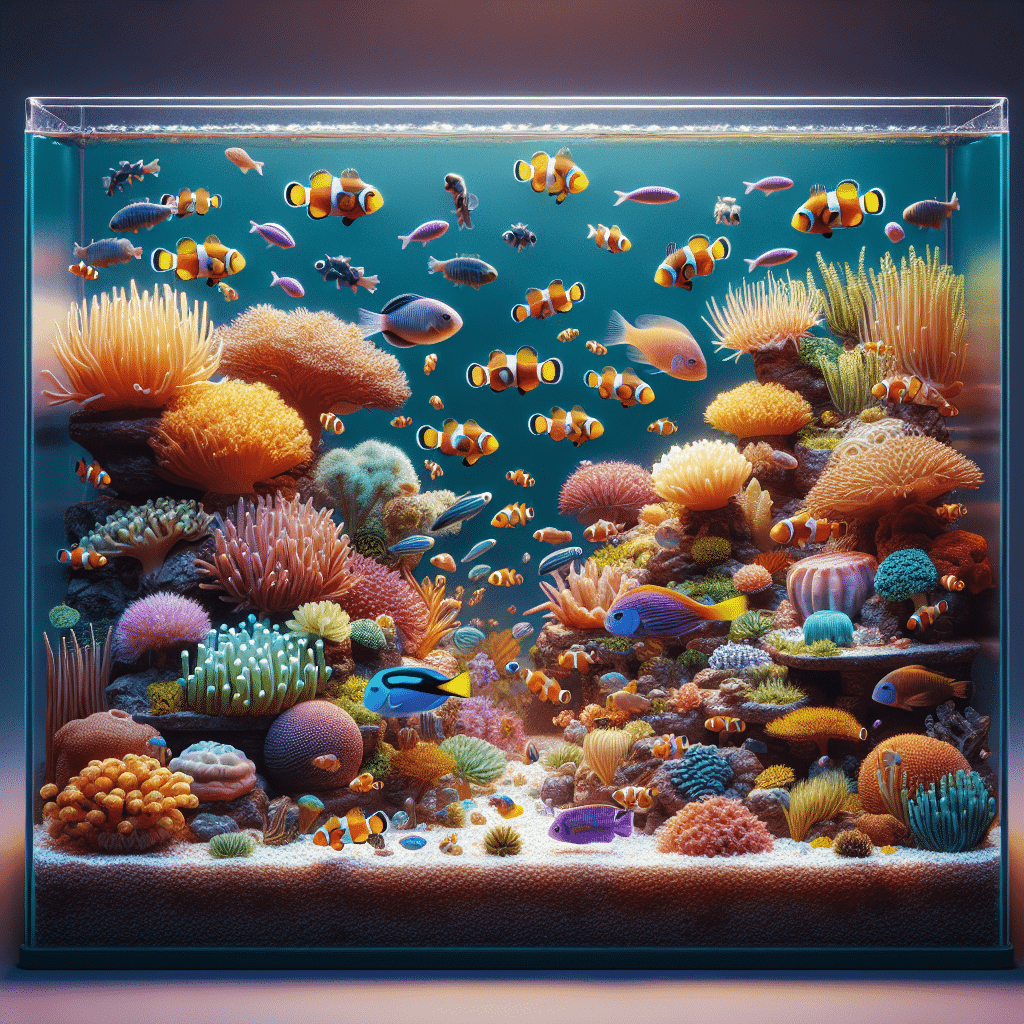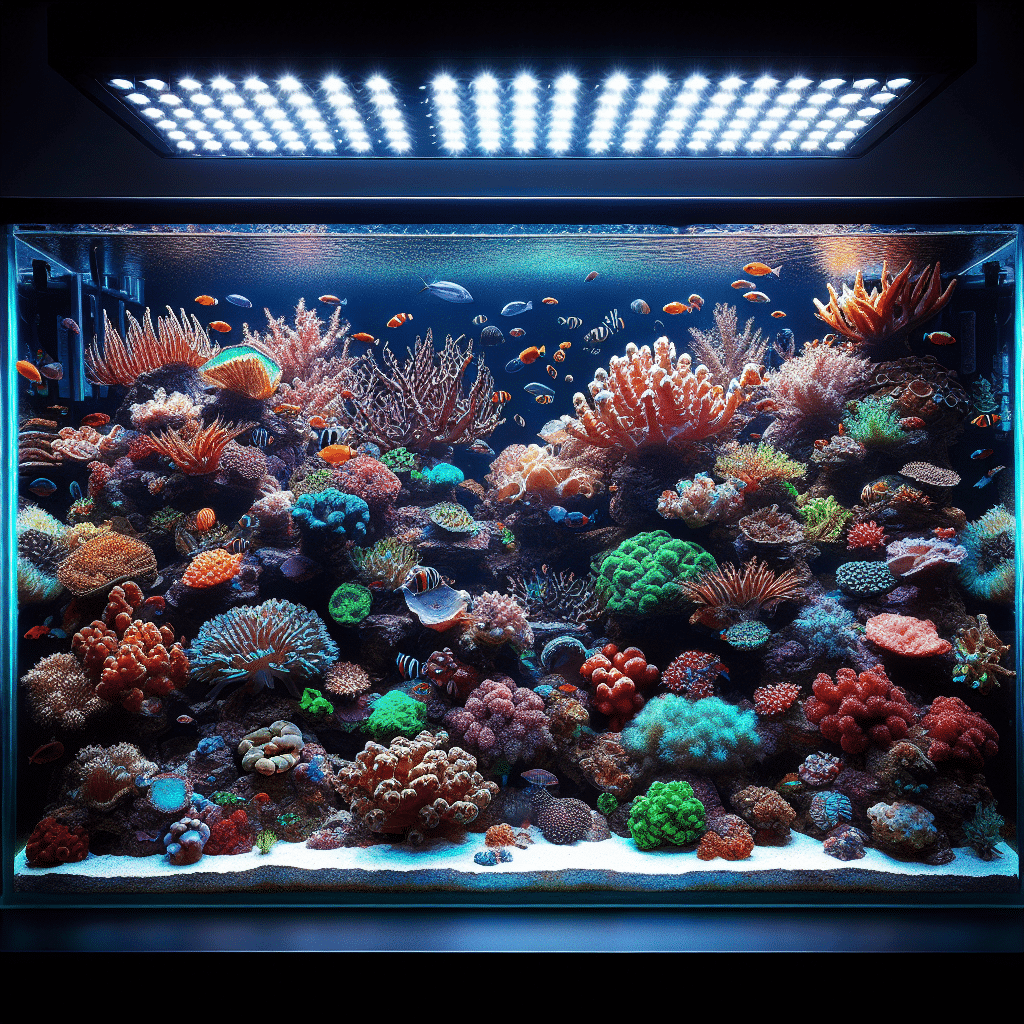Dive into Nano Reef Tanks
The Fascination with Nano Reef Tanks
Nano reef tanks have gained popularity among aquarium enthusiasts due to their compact size and the stunning marine ecosystems they can host. These small tanks often feature vibrant corals, intriguing fish, and a diverse array of invertebrates, allowing hobbyists to create beautiful underwater landscapes in limited spaces. The appeal lies not only in their aesthetic value but also in the challenge they present. Maintaining a balanced nano reef demands knowledge and skill, making it a rewarding endeavor for those who enjoy the art of aquascaping.
Importance of Temperature in Nano Reef Tanks
Temperature is a critical factor in the health and stability of a nano reef tank. Marine organisms thrive within specific temperature ranges, and even slight fluctuations can lead to stress or health issues. Most reef fish and corals are sensitive to temperature changes, which can affect their growth, reproduction, and overall well-being.
The ideal temperature range for a nano reef tank typically falls between 75°F and 80°F (24°C to 27°C). Maintaining this range helps ensure that both fish and corals remain healthy and vibrant. Below is a table summarizing the optimal temperature ranges for common nano reef tank inhabitants:
| Organism Type | Ideal Temperature Range (°F) | Ideal Temperature Range (°C) |
|---|---|---|
| Reef Fish | 75 – 80 | 24 – 27 |
| Soft Corals | 75 – 80 | 24 – 27 |
| Hard Corals | 76 – 82 | 24 – 28 |
| Invertebrates | 75 – 80 | 24 – 27 |
Understanding the significance of temperature in a nano reef tank allows hobbyists to create a more stable and thriving environment. For more detailed guidance on setting up a nano reef, check out our article on nano reef tank setup. Proper temperature management is just one aspect of creating a successful aquarium; factors such as lighting, filtration, and stocking also play vital roles in maintaining the overall health of the ecosystem.
Ideal Temperature Range
Creating a thriving environment in a nano reef tank requires careful attention to temperature. The right temperature range is crucial for the health of both fish and corals.
Optimal Temperature for Nano Reef Tanks
The ideal temperature for nano reef tanks typically falls between 75°F and 80°F (24°C to 27°C). This range mimics the natural conditions found in many coral reefs around the world. Maintaining a stable temperature within this range ensures that marine life can thrive and flourish.
| Temperature (°F) | Temperature (°C) | Suitability |
|---|---|---|
| 75°F | 24°C | Ideal for most corals and fish |
| 78°F | 26°C | Optimal for many reef inhabitants |
| 80°F | 27°C | Suitable for hardy species |
Factors Influencing Tank Temperature
Several factors can influence the temperature of a nano reef tank, and understanding these can help in managing the environment effectively.
- Room Temperature: The ambient temperature of the room where the tank is located can directly affect the water temperature.
- Lighting: The type and intensity of lighting used in the tank can generate heat. Nano reef tank lighting choices can thus play a significant role in temperature management.
- Equipment: Devices such as heaters, filters, and pumps can contribute to temperature variations. Knowing how to utilize nano reef tank equipment properly is essential.
- Tank Size and Volume: Smaller tanks like nano reefs can heat up or cool down more quickly than larger aquariums due to their reduced water volume.
- Evaporation: Water evaporation can lead to temperature fluctuations. Regular monitoring and maintenance can help mitigate this effect.
By understanding the optimal temperature and the factors that influence it, aquarium enthusiasts can create a stable environment for their nano reef tanks. For further information on setting up and maintaining a healthy nano reef, consider exploring articles on nano reef tank setup and nano reef tank maintenance.
Monitoring and Adjusting Temperature
Maintaining the correct temperature in a nano reef tank is vital for the health of marine life. Proper monitoring and adjustment techniques ensure that the temperature remains stable and within the ideal range.
Tools for Temperature Monitoring
Using the right tools for monitoring temperature is essential. Several devices can help aquarium enthusiasts track the temperature of their nano reef tanks accurately.
| Tool Type | Description |
|---|---|
| Thermometer | A basic tool that provides a quick reading of the water temperature. Digital thermometers are preferred for accuracy. |
| Temperature Probe | An electronic device that can be placed in the tank to monitor temperature continuously, often connected to a display unit. |
| Aquarium Controller | A multifunctional device that not only monitors temperature but can also control heating and cooling equipment. |
| Smartphone App | Some modern devices can connect to apps, providing real-time temperature updates and alerts. |
Techniques for Temperature Adjustment
Adjusting the temperature of a nano reef tank can be achieved through various techniques. These methods ensure that the tank environment remains stable for its inhabitants.
| Adjustment Method | Description |
|---|---|
| Heaters | Submersible heaters can be used to raise the temperature. Ensure they are adjustable and suitable for a nano reef tank. |
| Chillers | For cooling high temperatures, a chiller can be employed to maintain a stable environment. |
| Fans | Adding fans can help cool the tank by increasing evaporation, which can lower the temperature. This method is effective during hot weather. |
| Insulation | Insulating the tank can help maintain temperature by reducing heat loss or gain from the surrounding environment. |
| Water Changes | Regular water changes with water at the desired temperature can help gradually adjust the tank’s overall temperature. |
By utilizing the right tools and techniques for temperature monitoring and adjustment, individuals can effectively manage the nano reef tank temperature. This proactive approach ensures a healthy environment for fish and corals. For more information on setting up and maintaining a thriving nano reef tank, refer to our articles on nano reef tank setup and nano reef tank maintenance.
Common Temperature Issues
Maintaining the correct temperature in a nano reef tank is crucial for the health of its inhabitants. Several common temperature-related issues can arise, including overheating and low temperatures. Understanding these challenges and knowing how to address them will help ensure a thriving aquatic environment.
Overheating in Nano Reef Tanks
Overheating is a frequent problem in nano reef tanks, particularly during warm weather or when lighting systems generate excessive heat. Elevated temperatures can stress fish and corals, leading to adverse health effects or even loss of life. The ideal temperature range for most nano reef tanks is typically between 75°F and 82°F (24°C to 28°C).
| Temperature Range | Effect on Inhabitants |
|---|---|
| Below 75°F (24°C) | Potential stress for tropical fish and corals |
| 75°F – 82°F (24°C – 28°C) | Optimal for most species |
| Above 82°F (28°C) | Stress, decreased oxygen levels, potential coral bleaching |
Cooling Solutions for High Temperatures
To combat overheating, several cooling solutions can be implemented. These methods help regulate the temperature effectively:
- Increase Water Movement: Adding or adjusting water pumps can enhance surface agitation, promoting evaporative cooling.
- Use Fans: Positioning fans to blow across the water surface can also aid in cooling through evaporation.
- Adjust Lighting: Reducing the intensity or duration of lighting can lower heat generation. Consider switching to LED lights, which produce less heat.
- Chillers: For significant temperature control, external chillers can be used to maintain a stable environment.
Dealing with Low Temperatures
Low temperatures can be just as detrimental to a nano reef tank as overheating. Temperatures below the ideal range can slow metabolism in fish and corals, compromising their health and growth.
| Temperature Range | Effect on Inhabitants |
|---|---|
| Below 70°F (21°C) | Possible stress and reduced metabolic activity |
| 70°F – 75°F (21°C – 24°C) | Stress for tropical species, potential health issues |
To address low temperatures, consider the following solutions:
- Heaters: Utilize reliable aquarium heaters to maintain a consistent temperature. It is vital to choose a heater appropriate for the tank size.
- Insulation: Insulating the tank can help retain heat, especially during colder months.
- Positioning: Ensure the tank is not placed near drafty windows or doors where it can be exposed to cold air.
By effectively managing these common temperature issues, individuals can create a stable and healthy environment for their nano reef tank inhabitants. For more information on maintenance and setup, check articles on nano reef tank setup and nano reef tank maintenance.
Maintaining Stable Temperature
Creating and maintaining a stable temperature in a nano reef tank is essential for the health and well-being of its inhabitants. Fluctuations in temperature can stress fish and corals, leading to various health issues. This section provides tips for consistent temperature control and discusses seasonal considerations for temperature regulation.
Tips for Consistent Temperature Control
To ensure a stable temperature in a nano reef tank, consider the following strategies:
Use a Reliable Heater: Invest in a quality heater that is suitable for the size of the tank. Heaters with adjustable settings help maintain the desired temperature.
Regular Monitoring: Use a thermometer to monitor tank temperature regularly. Digital thermometers provide precise readings and can be easier to read than traditional ones.
Placement of Equipment: Position the heater away from the filter output to prevent the temperature from fluctuating due to water circulation.
Insulate the Tank: If the tank is located in an area with temperature fluctuations, consider insulating the sides or using an aquarium cover to minimize heat loss.
Limit Opening the Lid: Frequent opening of the tank lid can cause rapid temperature changes. Limit the time the lid is open, especially during feeding or maintenance.
Choose Appropriate Lighting: Lighting can generate heat. Ensure that the lighting system used does not cause excessive temperature increases. Consider using LED lights, as they produce less heat compared to traditional lighting.
Monitor Room Temperature: The surrounding environment can impact the tank’s temperature. Keep the tank away from windows, doors, or heating and cooling vents.
Seasonal Considerations for Temperature Regulation
Temperature fluctuations can vary with the seasons, requiring adjustments to maintain stable conditions. Here are some seasonal considerations:
| Season | Temperature Considerations |
|---|---|
| Winter | Cold weather can lower room temperature. Increase heater settings and monitor closely to prevent drops. |
| Spring | As temperatures rise, check for overheating. Adjust heater settings as needed and ensure adequate ventilation. |
| Summer | High ambient temperatures can lead to overheating. Use cooling fans or chillers to maintain optimal conditions. |
| Fall | Transition to cooler weather may require heater adjustments. Monitor temperature closely as seasons change. |
By implementing these tips and considering seasonal changes, a stable temperature can be maintained in a nano reef tank. For more information on maintaining a healthy environment, check out our articles on nano reef tank setup and nano reef tank maintenance.
Expert Advice on Nano Reef Tank Temperature
Maintaining the correct temperature is crucial for the health of a nano reef tank. Here are some best practices and guidelines for effective temperature management.
Best Practices for Temperature Management
- Set a Stable Temperature Range: The ideal temperature for a nano reef tank typically falls between 75°F and 80°F (24°C to 27°C). This range supports the well-being of both fish and corals.
| Temperature Range | Ideal Conditions |
|---|---|
| 75°F – 76°F | Good for most fish species |
| 76°F – 78°F | Optimal for coral growth |
| 78°F – 80°F | Suitable for tropical fish |
Use a Reliable Heater: Invest in a high-quality aquarium heater to maintain consistent temperatures. Ensure the heater is appropriately sized for the tank volume.
Regular Monitoring: Check the tank temperature daily using a reliable thermometer. Digital thermometers often provide accurate readings and can be more convenient than traditional ones.
Avoid Temperature Fluctuations: Sudden changes in temperature can stress aquatic life. Gradually adjust the temperature if necessary, especially when performing water changes.
Consider Tank Placement: Place the nano reef tank away from direct sunlight and drafts, as these can lead to unwanted temperature changes.
Implement a Cooling System: In case of overheating, consider using fans or a chiller to regulate the tank’s temperature.
For further details on maintaining a healthy environment, refer to our articles on nano reef tank setup and nano reef tank maintenance.
Seeking Professional Guidance
For those new to the hobby or facing persistent temperature issues, consulting with an expert can be beneficial. Professional aquarists can provide tailored advice based on specific tank conditions and setups.
Join Aquarist Communities: Engage with local or online reef tank communities. These forums offer a wealth of knowledge and support for troubleshooting temperature-related problems.
Consult Aquatic Professionals: Visiting a local aquarium store or contacting a marine biologist can provide insights on best practices and equipment suited for managing nano reef tank temperature.
Utilize Online Resources: Numerous online platforms offer guidance on various aspects of reef tank management, including temperature control. Explore articles on nano reef tank lighting and nano reef tank filtration for additional tips.
By following these best practices and seeking expert advice when needed, individuals can maintain an optimal environment for their nano reef tanks, ensuring the health and vitality of both fish and corals.



